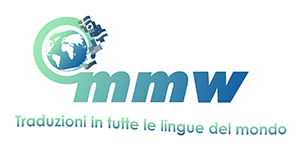Ewellic alphabet

Origin
The Ewellic alphabet was invented in 1980 by Doug Ewell. It was originally intended
as a means of secret writing. The shape of Ewellic letters was inspired by
the Runic and Cirth scripts,
but shows greater (though still imperfect) regularity of form. The name
“Ewellic” was first applied to the script in 1998.
As a phonemic alphabet intended for a limited set of languages, Ewellic
represents the general sound of words as perceived by the speaker,
representing a middle ground between the irregularity of standard spelling
and the phonetic precision achievable with IPA.
No imaginary languages, cultures, or worlds are associated with the Ewellic
alphabet.
Notable features
- Written from left to right in horizontal lines, with spaces between words.
- Words of more than one syllable require an acute accent
(ˊ) over the vowel of the stressed
syllable. Accents may be used sparingly or omitted when writing French and
other languages where stress is not significant. - The “schwa” letter is intended for very limited use,
unlike the frequent use of the schwa (ǝ)
in dictionaries. As a special case, unstressed “a,”
“an,” and “the” in English are written with the
schwa. - Because Ewellic is a phonemic alphabet, and because pronunciation varies
(especially in English), spelling is less rigid than in Latin-script
orthographies. - A full set of digits is provided, including hexadecimal digits, which
were added in 2002. Hexadecimal numbers are indicated by preceding a string
of digits with a grave accent (ˋ).
European digits may also be used. - Ewellic is registered in the
ConScript Unicode Registry
and supported in the
Code2000 and
Code2001 fonts by James
Kass.
Used to write
English, Esperanto,
French, German,
Italian, Spanish,
and any other language whose phonemic repertoire is covered. New letters
were added in 2007 to support languages other than English.
Consonants
All consonants have a single vertical stroke and no horizontal (perpendicular) stroke.

Vowels
All vowels have two vertical strokes.

Ligatures
The sounds OY and ER (as in oyster) may be represented by special
ligated forms, as shown below. Other ligatures may be formed between letters
that share a natural connection point. The sample texts on this page do not
use ligatures due to font and rendering-engine limitations.

Digits
Digits have a single vertical stroke. Digits 0 through 9 have one
horizontal (perpendicular) stroke, while digits 10 through 15 (for
hexadecimal use only) have two horizontal strokes.

Sample text (English)

Transliteration
All human beings are born free and equal in dignity and rights. They
are endowed with reason and conscience and should act towards one another
in a spirit of brotherhood.
(Universal Declaration of Human Rights, Article 1)
Sample text (German)

Transliteration
Alle Menschen sind frei und gleich an Würde und Rechten geboren. Sie
sind mit Vernunft und Gewissen begabt und sollen einander im Geist der
Brüderlichkeit begegnen.
(Die Allgemeine Erklärung der Menschenrechte, Artikel 1)
Links
General description of Ewellic, with links to more sample texts:
http://www.ewellic.org/ewellic.html
http://www.ewellic.org/ewellic-charts.html
Complete list of letters:
http://www.ewellic.org/complete.html
Questions and answers:
http://www.ewellic.org/ewellic-q-and-a.html
ConScript Unicode Registry proposal:
http://www.evertype.com/standards/csur/ewellic.html
